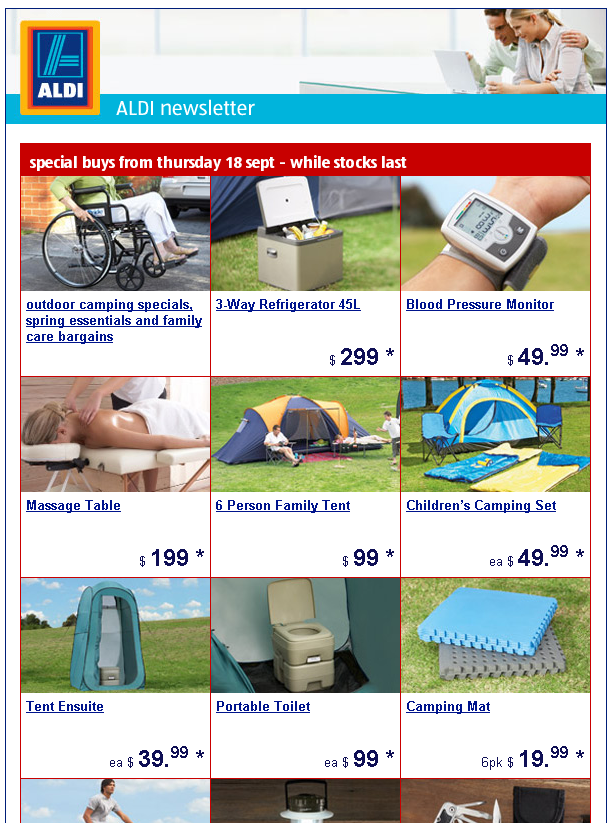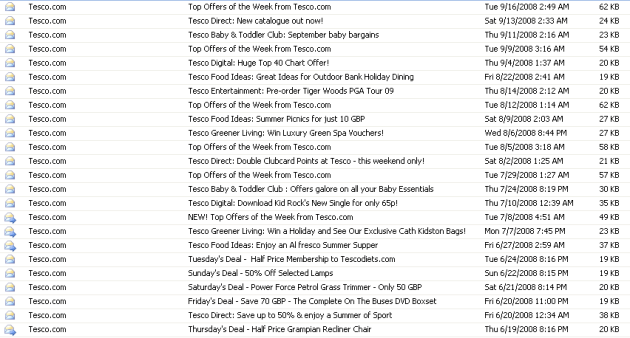Get the facts – Companies trying to be honest
December 8, 2008 3 Comments
On the back of Dell’s success with IdeaStorm (see recent design update below) and the current economic climate, a lot more brands and companies are trying to be honest with consumers about what is happening within their company and how they are handling the economic changes.

Dell IdeaStorm - design refresh
After Dell’s trial, an example I found was Tesco. About two years ago, when Tesco and the other UK supermarkets were being investigated by the government body around pricing (Competition Commission), they created a site that provided insights into how Tesco worked. Their example was a site called Talking Tesco. It included perspective of all levels of employees from within Tesco, gave people the opportunity to have a say and tried to demonstrate that Tesco were listening to their consumers. It’s a good example, but hasn’t been updated for a long time which is a wasted opportunity with the current cliamte.
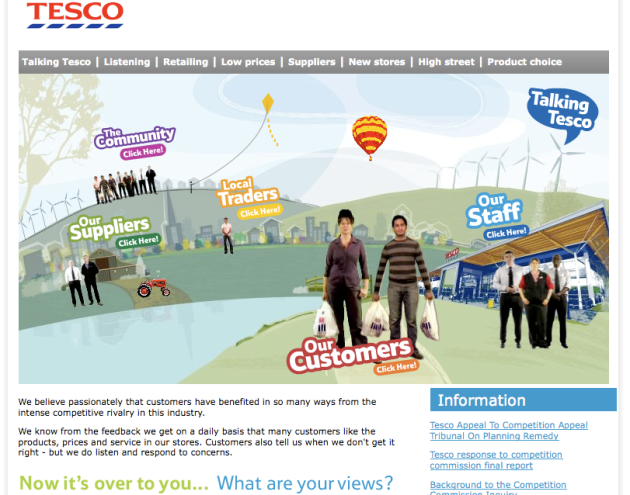
Talking Tesco Homepage
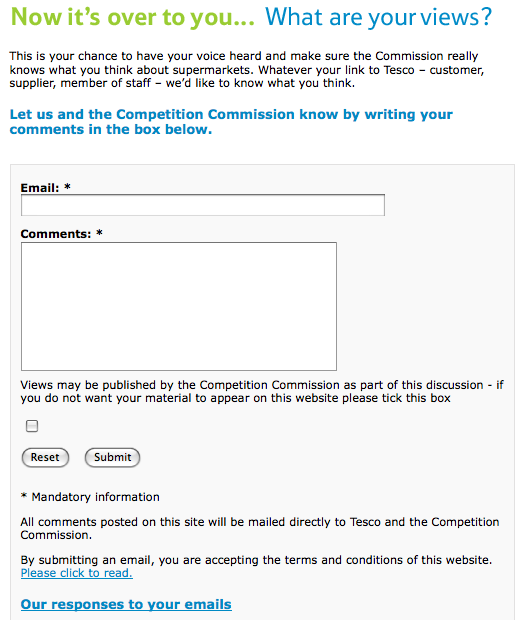
Talking Tesco - Have your say
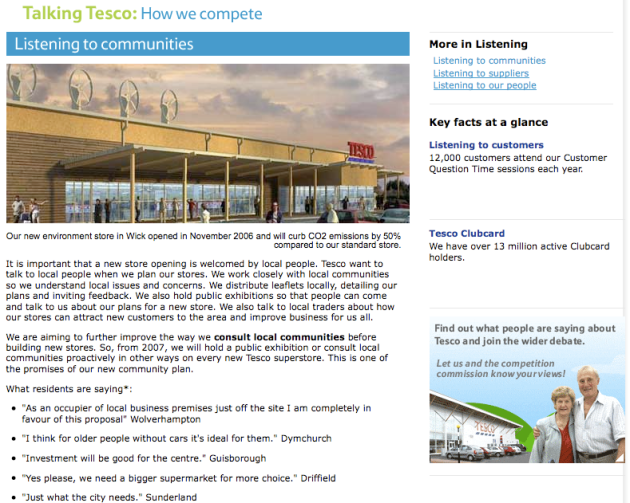
Talking Tesco - Listening to the Community
On the back of this example, Woolworths Facts was created. The content was initially produced for Woolworths employees, but because it was so relevant to the ACCC enquiry, it was created into a website. The only way consumers can find this website is via a promotional spot on the Woolworths home page. A little unfortunate becuase there is so much great information.
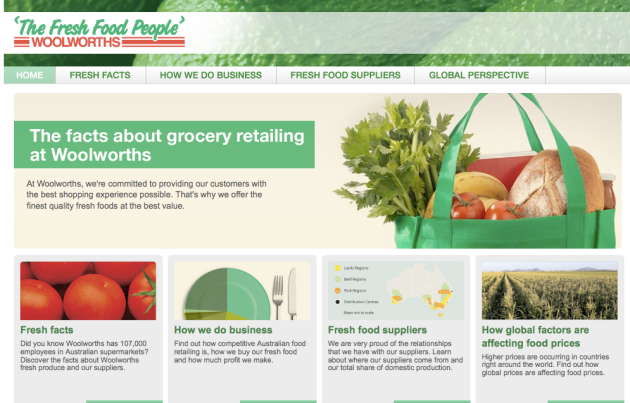
Woolworths The Facts - Homepage

Woolworths The Facts - Beef Origins
The opportunity for this site is to turn it into a blog or start collecting consumer insights or questions that they have of Woolworths. Obviously, it’s a big investment, but something that would show Woolworths are commited to honest communications with their consumers.
Obama’s campaign included a negative spin on getting the facts. It was focused on John McCain and understanding who ‘The Real John McCain‘ was. Interesting spin, but not something I would recommend.

The Real John McCain - Homepage
Today I came across something that GM have created to provide justification about why they are requesting more money from the US government to bail them out, GM Facts & Fiction. Unfortunately, it doesn’t mention anything about the private jet or CEO pay cut. Not sure if it really is as honest as it could be…….
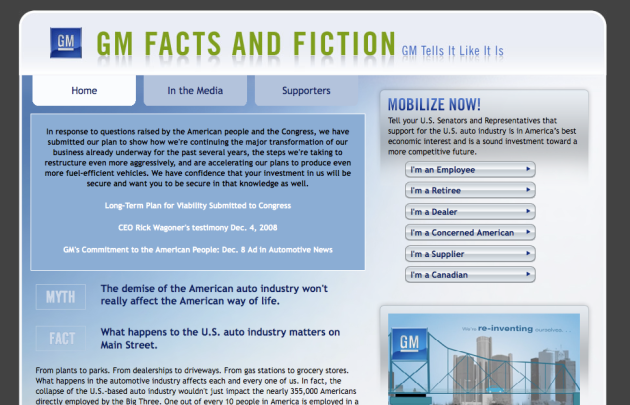
GM Facts & Fiction - Homepage
LEARNINGS
- Total transparency – A company must be honest with everything and not just the parts it wants the public to know about.
- Two way dialogue – There needs to be an opportunity for consumers to share their thoughts and ask questions that they want answered. It also helps a company shape what content they should be creating and what press releases they should be considering.
- Positive rather than negative – There needs to be a focus on what your company is doing to change, rather than competitors. Negativity breeds negativity and if people find out, it is never a positive outcome.
FINAL THOUGHT
I wonder how this approach would go for an advertising agency. An agency website (or blog) that is totally transparent and honest about everything that is going on within the agency. There is so much information leaked to the press (particularly trade press) around the hirings, firings, client wins and client losses that it might be one way of controlling (or influencing) the information flow out of an agency.
Does anyone know any agencies that are trialling this? It must be more than just a marketing blog.
![Reblog this post [with Zemanta]](https://i0.wp.com/img.zemanta.com/reblog_e.png)

